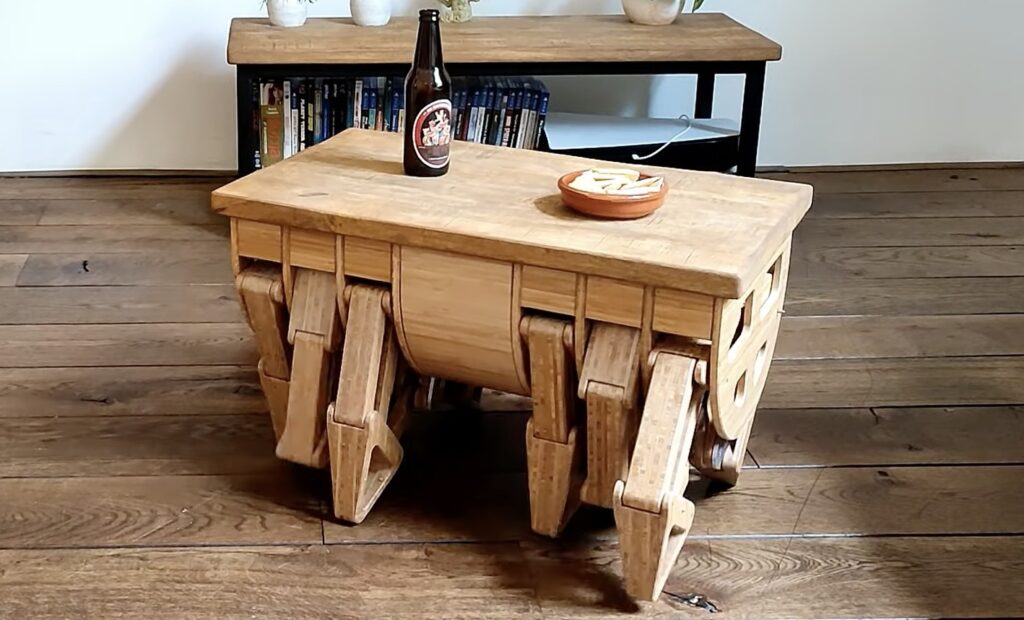
More than 30 years ago, Dutch artist Theo Jansen began astounding the world with his Strandbeesten walking sculptures. Even after decades, they have an almost mythical allure thanks to the incredibly fluid way in which they walk. They’re clearly constructs, but with gaits that are almost organic. Inspired by his fellow Dutchman, Giliam de Carpentier built a motorized Strandbeest-style coffee table capable of delivering drinks.
This coffee table, dubbed “Carpentopod,” walks on six leg mechanisms that look and operate a lot like those of a Strandbeest. They convert rotary motion into complex foot movement through a series of rigid linkages.
de Carpentier was able to develop the legs’ gait and physical geometry using software he first created way back in 2008. It automatically optimizes the design through a process very similar to natural selection, with the most successful descendants going on to reproduce and ultimately yield very effective geometry for the giving constraints. de Carpentier’s software was efficient enough to evolve dozens of generations every single second, so it produced an optimized leg design in short order.
In this case, “optimal” mostly means “smooth.” When walking, it almost looks as stable as if it were rolling on wheels. It is, therefore, perfectly capable of carrying drinks without spilling them.
In contrast to the classic Strandbeesten, de Carpentier wanted this coffee table to be controllable. So, it has a pair of geared brushless DC motors to drive the legs. Like a tank, it steers by turning one side’s motor faster than another. An Arduino Nano board controls those motors, which have Hall effect encoders for closed-loop feedback, according to input that it receives from a Nintendo Wii Nunchuk via a Bluetooth module. With power from a large hobby LiPo battery back, it can roam around de Carpentier’s living room at his command.
